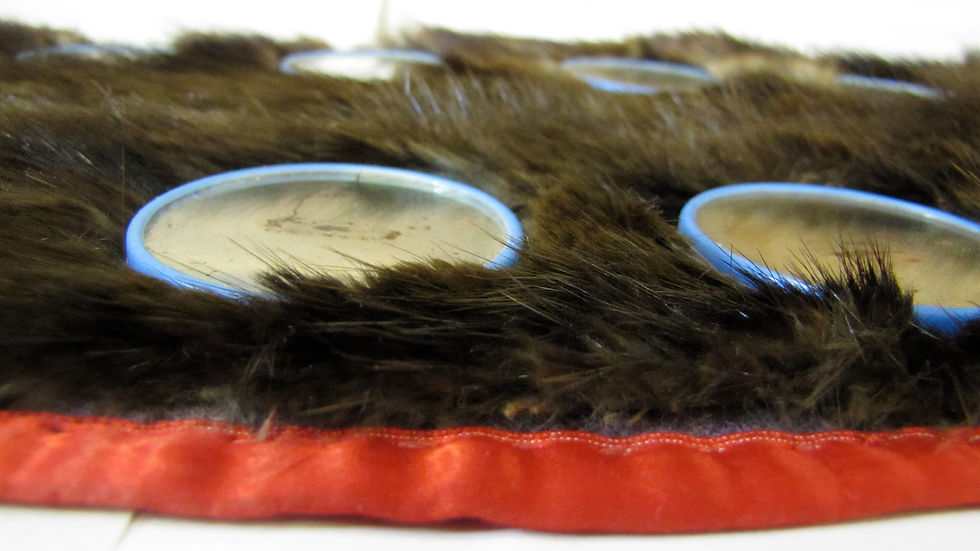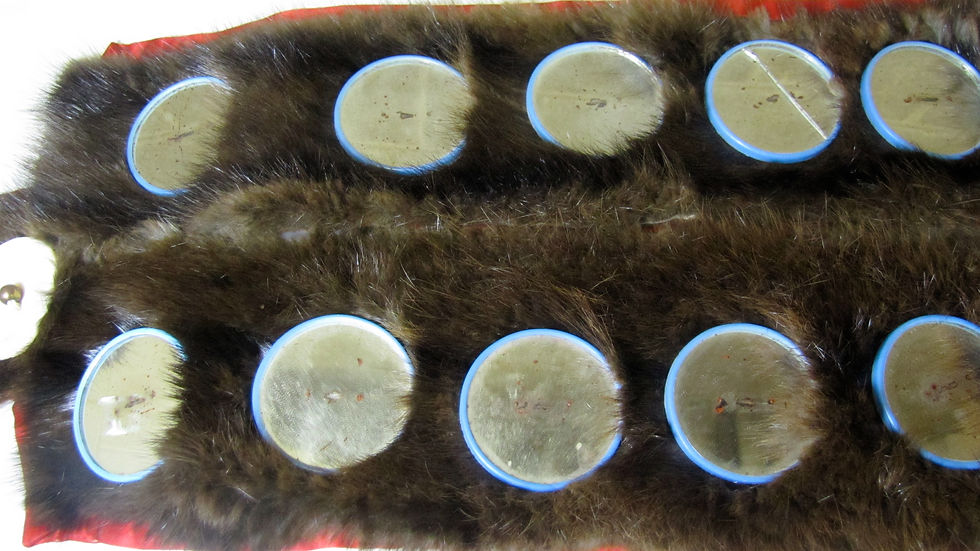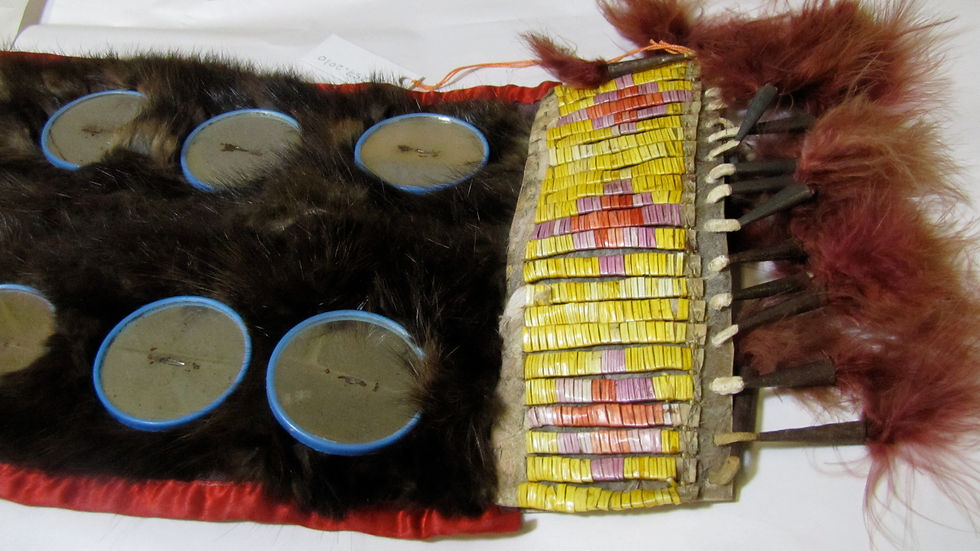The Jim and Vanita Oelschlager
Native American Ethnographic Collection

Otter Breastplate

Otter Breastplate

Otter Breastplate

Otter Breastplate

Otter Breastplate

Otter Breastplate

Otter Breastplate

Otter Breastplate
Otter Breastplate
ca. 1890-1930
Great Plains. Otter Fur, Porcupine Quills, Mirrors.
L49.5” x W8.5”
NAI.257.2010
Sioux men used otter breastplates, often called “Otters,” as part of their ritual clothing for the grass dance. The origins of the grass dance began among tribes in the northern Plains in the early 1900s to stabilize a culture that was rapidly changing due to the United States’ government’s oppressive Indian policies. The grass dance incorporated elements from several traditional tribal dances and is still danced today.
Made from the hide of a river otter, this breastplate is decorated with porcupine quills, tin cones, and bone. It has an intact otter tail in the back. The stitching and decorations indicate it was made in the late 1800s. This particular breastplate also features twenty-two mirrors that were originally used to advertise a product in the non-native world. The mirrors were added later as the style became popular for the grass dances from 1910 until 1935.
Quilling is a traditional form of decoration that predates beading. Women used four different sizes of porcupine quills and flattened the quills with saliva and their teeth to make them pliable for creating designs. The tin cones were a popular form of decoration by the early 1900s. They added a rhythm to the grass-dancer’s performance.
The mirrors used in this style breastplate were originally from encased cent mirror tokens. The tokens were a popular form of marketing used in the United States that featured a penny surrounded by a business advertisement with a mirror on the reverse side. The mirrors featured on this particular breastplate are made from an early form of plastic called cellulose acetate used in the 1920s. They are commonly called celluloid mirrors.